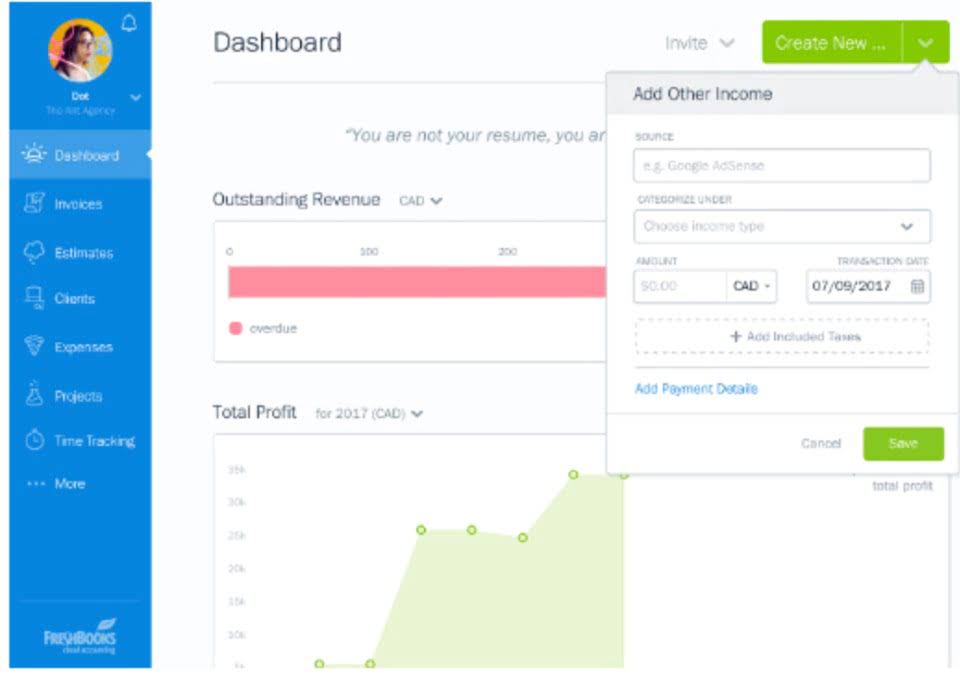But in certain situations, such as social distancing measures due to the COVID-19 crisis, traveling may be discouraged. Unless you need to transport certain goods, you might not have to do a lot of driving or traveling. Either way, you should have an effective means to track if your campaigns are generating awareness. If your campaign has been on for a few months with hardly any improvements to your sales, it’s likely better to cancel them. At the end of the day, it’s a waste to keep paying for ineffective ads. By doing the math manually or via using our calculator, Michael now knows that he needs to sell about $10,000 in pizza slices before he can realize a profit for himself.
Variable Costs per Unit:
The break-even analysis is important to business owners and managers in determining how many units (or revenues) are needed to cover fixed and variable expenses of the business. The break-even analysis calculator is designed to demonstrate how many units of your product must be sold to make a profit. Hit “View Report” to see a detailed look at the profit generated at each sales volume level.
How does changes in fixed costs, variable costs, and selling price affect the break-even point?
Lenders and investors will ask about BPE in the financial report section of your business plan. On the basis of values entered by you, the calculator will provide you with the number of units you would require to reach a break-even point. Percentage difference between the cost of producing a good and its selling price. Breakeven points (BEPs) can be applied to a wide variety of contexts.
Budget Calculators
- This formula calculates the units sold to cover all costs, providing a clear target for businesses to aim for profitability.
- This way, you can keep the selling price more reasonable while still paying off your commercial loan.
- One business’s fixed costs could be another business’s variable cost.
- A break-even point analysis is used to determine the number of units or dollars of revenue needed to cover total costs (fixed and variable costs).
- Yes, the break-even point provides valuable insights into the financial risk of a business venture by indicating the level of sales needed to cover costs and avoid losses.
If you’re looking to purchase a specific machine or a truck for your business, consider taking an equipment loan. This type of financing provides some of the lowest interest rates, especially if you take your loan from a traditional bank. The loan amount you can borrow depends on the value of the equipment you need to buy.
On the other hand, if this were applied to a put option, the breakeven point would be calculated as the $100 strike price minus the $10 premium paid, amounting to $90. If the stock is trading at a market price of $170, for example, the trader has a profit of $6 (breakeven of $176 minus the current market price of $170). Assume an investor pays a $4 premium for a Meta (formerly Facebook) put option with a $180 strike price. That allows the put buyer to sell 100 shares of Meta stock (META) at $180 per share until the option’s expiration date. The put position’s breakeven price is $180 minus the $4 premium, or $176.
Get in touch with members and let them know a little more about you. Once they know you, they can talk about your business and refer you to their friends and customers. Being part of a local business organization is also a good way to take part in cooperative marketing events. You can hold weekend markets or other holiday-driven events to boost sales.
If the stock is trading above that price, then the benefit of the option has not exceeded its cost. Assume that an investor pays a $5 premium for an Apple stock (AAPL) call option with a $170 strike price. This means that the investor has the right to buy 100 shares of Apple at $170 per share at any time before the options expire.
Understanding the different categories and types of break even calculations will help you determine which type of break even analysis is most relevant to your business. For example, if your business is seasonal, you may want to focus on the time required to break even. For example, let’s say it costs $5 in materials, labor, and other direct expenses to create a product. If you generate 1,000 units of that product, your BEP will be $5,000. Don’t forget other fixed expenses such as rent, marketing, research and development, insurance, etc. For small businesses, on average, it takes at least two to three years to become profitable.
For this calculator, we are calculating the fixed costs on a monthly basis. The formula for calculating the break-even point (BEP) involves taking the total fixed costs and dividing the amount by the contribution margin per unit. The Break Even Quantity refers to the number of units required to break even. Fixed costs are the expenses that don’t change regardless of the number of units produced, while variable costs increase or decrease with the number of units produced. It is the point at which your revenue equals your total expenses, meaning that your business is not making a loss or a profit. It can help you determine the minimum sales required to cover costs and make a profit.
You would not be able to calculate the break-even quantity of units unless you have revenue and variable cost per unit. Increasing Production Costs – In other cases, demand for your product may remain the same or stay steady. However, the cost of producing xero community 2 million subscribers your product is likely to increase over time. When this happens, expect your BEP to increase because of the higher expenses. Besides the production costs, other variables such as utilities, rent, and employee salaries will also increase over the years.
Achieving a competitive price and upgrading the quality of your product will also boost sales, therefore reducing BPE. It’s a useful reference point that helps strategically price your products. When your business reaches its break even point (BEP), your company’s revenue is precisely equal to its total estimated business costs. BEP is the level of production at which your total revenue is the same as your business expenses. It means no net profits or losses for a company, it simply “broke even.” BEP is an important milestone that can determine the success or failure of any venture. It’s a sign your business can earn just as your expenses have ended.
It provides a clear target for sales and informs many aspects of business operations, from pricing to financial forecasting. Understanding the break-even point is essential for setting sales targets, pricing products, and planning for growth or cost reductions. Break-Even Point can help businesses make informed decisions such as pricing strategies, sales targets, and cost management. To calculate the Break-Even Point, you need historical data on costs, sales, and revenue. Businesses without this data may find it challenging to use Break-Even Point Calculator.
The break-even point is the number of units that you must sell in order to make a profit of zero. You can use this calculator to determine the number of units required to break even. By calculating the break-even point, businesses can identify their minimum sales targets and develop strategies to achieve profitability and sustainable growth. Businesses should consider factors such as market demand, competition, pricing dynamics, and sales forecasting accuracy when interpreting break-even point results. The costs that vary with the level of production or sales, such as raw materials, direct labor, and sales commissions, expressed on a per-unit basis.
In other words, the break-even point is equal to the fixed cost less the difference in the selling price andvariable price (both values taken per unit). The answer will be the number of units (of products) you needto sell to cover your expenses while making no loss or profit. Fixed costs are expenses that typically stay the same each month, while variable costs increase or decrease based on a company’s production volume.
Before the internet and social media, small businesses would usually place ads on local newspapers and directories. Companies with bigger budgets spend on above the line ads such as TV commercials and billboards. But these days, almost every type of business takes advantage of social media platforms to reach their consumers. It’s also more cost-effective to maintain a social media page and website than pay for a billboard or TV commercial.
Potential investors in a business not only want to know the return to expect on their investments, but also the point when they will realize this return. This is because some companies may take years before turning a profit, often losing money in the first few months or years before breaking even. For this reason, break-even point is an important part of any business plan presented to a potential investor. Remember, the break-even point is the number of units you must sell so that your business has neither a profit nor a loss. This crucial financial metric empowers you to make informed assessments of when your business will cover costs and begin generating profits with precision. While Break-Even Point is an excellent tool for evaluating business profitability, other methods can provide more insights.
In this case, you estimate how many units you need to sell, before you can start having actual profit. The fixed costs are a total of all FC, whereas the price and variable costs are measured per unit. This break-even calculator allows you to perform a task crucial to any entrepreneurial endeavor.
Break-even analysis is often a component of sensitivity analysis and scenario analysis performed in financial modeling. Using Goal Seek in Excel, an analyst can backsolve how many units need to be sold, at what price, and at what cost to break even. The difference between a business that sells a service versus one that manufactures or resells a product is, a manufacturer or reseller has component costs. A break-even calculator will calculate the number of units you need to sell to reach the BEP. Also calculates fixed, variable, and component costs as a percentage of sales.
If you’re not used to requesting referrals, make it a habit, most appropriately after completing a service. To encourage your customers, you can even make a referral program which offers discounts or gift checks. If you need to stay out of town for a business-related trip, take advantage of credit card reward points. If you need to go on frequent trips, choose a more affordable hotel. Though business transport expenses are tax deductible, they still take cash before you can make claims. If you have large transportation costs, especially if you’re a small business, make sure to maximize your deductions.
It shows the scope of the product to be introduced, estimates effective fixedand variable prices, and decides the acceptable selling price of the product. Here is where the break-even calculator comes in handy; it helps you calculate how many units of theproduct you have to sell to reach the break-even point. When your sales go beyond that specific point,you’ll be yielding profits.
To do this, you must put an additional $10 per unit if you intend to sell 2,000 products in two years. Thus, your BEP selling point will be $25 per product during the first two years. Suppose your overhead expense is $10 per product, which is $100,000 for 1,000 units. If you generate and sell 1,000 products, your total BEP would be $15,000, which is $15 per product. Our online calculators, converters, randomizers, and content are provided “as is”, free of charge, and without any warranty or guarantee. Each tool is carefully developed and rigorously tested, and our content is well-sourced, but despite our best effort it is possible they contain errors.
To estimate monthly amounts for these payments, simply divide the cost amount by 12. For fixed costs incurred on a quarterly basis, divide the cost amount by four. This is a step further from the base calculations, but having done the math on BEP beforehand, you can easily move on to more complex estimates. We use the formulas for number of units, revenue, margin, and markup in our break-even calculator which conveniently computes them for you.
Variable costs are those items that change over time and are not required. The amount a business spends on advertising can increase, decrease. Or the business can even eliminate advertising from one period to the next. https://www.bookkeeping-reviews.com/ helps you categorize your business based on the number of units you need to sell to break even. The following table outlines different categories, range, and levels of Break-Even Point calculations and the result interpretation.
Imagine you sell hotdogs, and you want to know how many hot dogs you need to sell to reach your BEP. You buy hotdog rolls in packages of a dozen, and the hotdogs in boxes of forty-eight. You should not enter the total cost of a package of rolls and a package of hotdogs.
It’s ideal for business owners that have good credit and are looking to expand their company. Often, new business owners do not get the results they need by simply putting ads. Remember that marketing is a process that entails planning and reaching goals.
To determine the break even point (BEP), you must take the total fixed costs of production, and divide it by each individual revenue minus the variable cost per unit. Again, fixed costs are expenses that do not change based on the number of units sold. When we subtract the variable cost per unit from the revenue (selling price per unit) and divide this by the revenue, this is also known as the company’s gross profit margin ratio. To calculate break-even, you need to know the total fixed costs, the total variable costs, and the total sales revenue.1. Fixed costs are those costs that do not vary with production or sales volume.
In such a scenario, you need to increase the selling price ofproducts or decrease the fixed and variable costs. Both of these steps will help decrease the number ofbreak-even units, which means you’ll reach the zero loss and zero profit point with a lesser number ofproducts. Variable costs are the costs that are directly related to the level of production or number of units sold in the market. Variable costs are calculated on a per-unit basis, so if you produce or sell more units, the variable cost will increase. Some common examples of variable costs are commissions on sales, delivery charges, and temporary labor wages. In contrast to fixed costs, variable costs increase (or decrease) based on the number of units sold.






